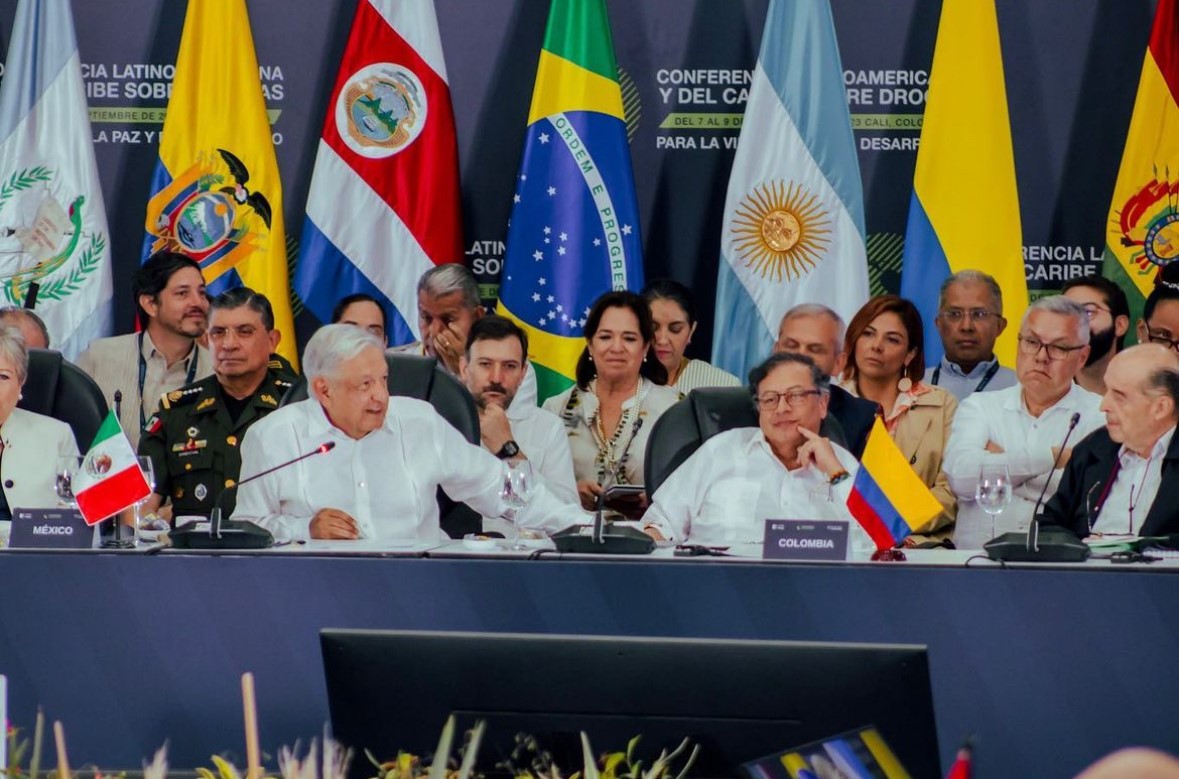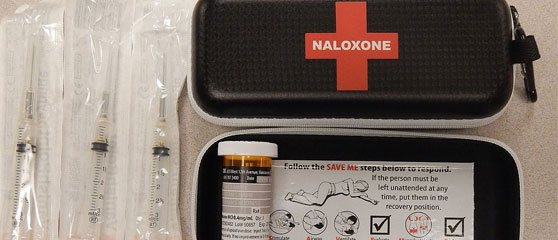One of Trump’s latest executive orders calls for a crackdown on homelessness, encouraging federal agencies to defund drug-related interventions and institutionalise those living on the streets. While the directive reportedly aims to protect public safety, drug policy experts are concerned that this will end up hurting more people than the current state of American drug policy.
This is the latest directive from the American president who has often relied on executive orders to guide the nation-state’s approach to dealing with drugs either within itself, at its border, or abroad.
What does the Executive order say?
The recent executive order, entitled “Ending Crime and Disorder in America’s Communities” was released on 24 July, and takes aim at the growing issue of homelessness across the US. The order claims that homeless people are addicted to drugs, have a mental health condition or both issues, which has allegedly led to a rise in public insecurity.
The executive order’s directives can be generally divided into four sections.
1. Expanding the use of civil commitment powers
Civil commitment is the legal process of institutionalising people into treatment facilities against their will. This process is usually reserved for those considered to be a threat to themselves or others, applied primarily for mental health conditions. According to the Prison Policy Initiative, there were around 6,000 people (mostly men) in civil commitment facilities across the country in 2022. At the moment, only 20 states have existing legislation that allow for civil commitments, primarily used for sex-related crimes.
The executive order calls for reversing Federal or State judicial precedents and consent decrees that prevent civil commitments, so homeless people (using drugs or with mental health conditions) can be placed in “appropriate facilities for appropriate periods of time”. It also calls for additional funding or technical assistance for treatment facilities to house this larger cohort.
Evidence of civil commitment’s effectiveness is mixed. In Massachusetts, one of the states with the highest rates of processed civil commitments laws, two-thirds of surveyed court clinicians confirmed their belief in civil commitment as an appropriate intervention for substance use, indicating that a recent drug overdose was enough to recommend someone be placed in involuntary treatment.
Addiction physicians have shown their support for using civil commitment for addiction in the past, with 61% of those polled supporting their use; a notable 38% were unfamiliar with these laws and their appropriate use. However, a 2024 study found no evidence of American civil commitment laws reducing overdose-related deaths, highlighting that their use actually increased drug-related deaths in certain states.
2. Fighting homelessness
The second part of the executive order calls for several Federal agencies to prioritise funding initiatives and programmes that enforce the prohibition of open drug use, urban camping, loitering and squatting. This includes an additional order for the Attorney General to ensure funding for encampment sweeps.
Encampment sweeps have been extensively used in the US and Canada, often causing serious damage and trauma to those displaced. There’s ample evidence that encampment sweeps are violent and traumatising interventions, can rob people of crucial belongings, do not reduce crime in the surrounding area, and do little to improve people’s health and wellbeing. Model studies into homeless encampments underscore that sweeps create worse health outcomes than no intervention.
3. Defund harm reduction
Part of the executive order’s redirection of funding includes urging the Secretary of Health and Human Services to direct federal grants away from programmes that fail to achieve “adequate outcomes”. While these adequate outcomes are never defined, they explicitly include “harm reduction” or “safe consumption” efforts, as they’re considered to “only facilitate illegal drug use and its attendant harm”. Funding should instead prioritise the expansion of drug courts and mental health courts for individuals deemed a threat to public safety.
The executive order also urges the end of “housing first” policies, which usually prioritise securing homeless people accommodation before addressing any health or social issues they may also have. These programmes are criticised for deprioritising people’s accountability and failing to promote “treatment, recovery and self-sufficiency”.
It seems like housing first programmes were always targeted for abolition: a previous executive order ended the US Interagency Council on Homelessness, a small federal agency that coordinated housing for homeless people, advocating for housing first programmes.Known right-wing think-tanks, like the Cicero Institute and The Heritage Foundation have also called for their end as they don’t force people into recovery.
The defunding of harm reduction and housing first programmes would be a massive watershed moment for the US that may reverse hard-fought progress in overturning overdose deaths. As the National Alliance to End Homelessness has warned, the Executive Order’s attack on harm reduction, naloxone provision and drug equipment is likely to kill homeless as well as housed people in the long run.
4. Accountability and surveillance
Under the umbrella of more accountability, the executive order calls for stronger compliance with treatment programmes (for drugs or mental health issues) and for a crackdown on the use of any federal funds in needle and syringe programmes or for safe consumption sites. People or organisations that “facilitate drug use” or distribute drug equipment could have their funding revoked.
The explicit prohibition of federal funding for drug equipment in an Executive Order is bizarre: as Rahul Gupta, the former director of the White House’s Office of National Drug Control and Policy stated, no federal money can currently be used to buy drug equipment. But this hasn’t stopped President Trump from criticising key health interventions like needle and syringe programmes, despite clear backing for it from numerous health experts across the US, including the Centre for Diseases Control (CDC).
Punishment over support
There is a clear and urgent need to address homelessness and related health and social crises in America. Just last year, an estimated 653,104 people slept on the street for at least one night in 2023. As much as President Trump would like to blame this rise in the previous administration’s management, both sides of the American political spectrum have abandoned homeless people, those who use drugs and other marginalised communities for many years. Homeless people already struggled to access proper support for physical and mental health, as well as addiction in 2019; this crisis has not changed since then.
While there is an urgent need to address homelessness, addiction and mental health issues, drug policy experts condemn the punitive and carceral shift the Executive Order represents.
“This policy is an attempt to disappear homeless individuals and people who use drugs instead of housing or treating them,” Margeaux Lavoie from the Parabola Center, told TalkingDrugs.
Lavoie added that the Executive Order comes in the wake of significant cuts to Medicaid insurance, which may further limit people’s access to insured substance use treatment.
“While the order commands law enforcement to arrest and forcibly institutionalise people experiencing homelessness or substance abuse, it does nothing to increase the treatment quality or capacity of organizations who have expertise in addressing these issues,” Lavoie added.
Ignoring harm reduction’s evidence
As Bryon Adinoff, President of Doctors for Drug Policy Reform stated, the whole abandonment of harm reduction and its ample evidence base “reflects a departure from decades of public health research and practice”.
The explicit prohibition of safe consumption sites is particularly concerning, as it rejects decades of health and social benefits from their existence in the US and abroad.
“These programmes are not permissive of drug use—they are a pragmatic and compassionate response to a public health emergency, designed to engage people who are often disconnected from traditional care,” he added.
The misrepresentation of safe consumption sites as places of debauchery and free drugs is a common trope of right-wing attacks on harm reduction. Expanding these attacks to harm reduction in general, widely accepted worldwide as key links to further treatment and to reduce bloodborne-virus transmissions, is dire.
“It’s alarming that cities implementing proven, lifesaving interventions could be punished for doing exactly what public health demands—while the federal government pours billions into enforcement and prisons, and slashes funding for healthcare, housing, and mental health services,” Maritza Perez Medina, Director of Federal Affairs at the Drug Policy Alliance, told TalkingDrugs.
For now, how the Executive Order will be implemented is unclear. Just last week, federal health officials were asked to remove mentions of or webpages with information on harm reduction. What is clear is that the rest of the Trump presidency may involve a gutting of hard-earned accomplishments in harm reduction, the effects of which we will only understand in years to come.


